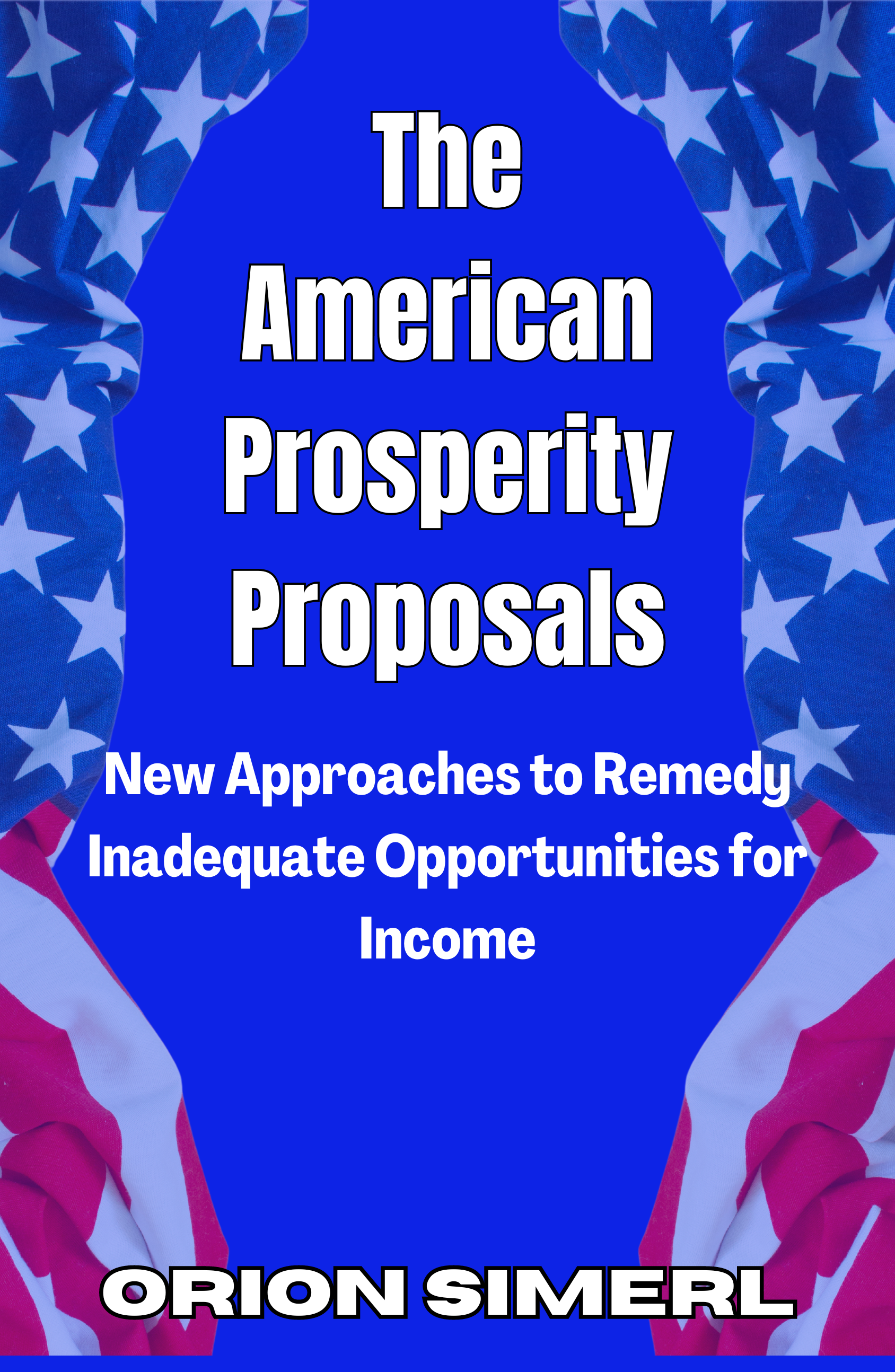Description
There are 5 proposals intended to improve income opportunities for the bottom 50% of the income distribution. They were written at different times with the oldest dating back to 2014 in some form. The older proposals still have references from around the time they were created. The Round Up Service Charge is the latest proposal added in 2023. Since it was an innovation on a previous proposal contained in this book, the book had to be updated. Some of the balance stimulus data was updated and I conducted a general edit of the book at that time.
The first proposal is called The Balance Stimulus. The aim of the Balance Stimulus is to provide low income people with the means to overcome impediments to achieving higher incomes. I’m beginning with this proposal because it identifies the obstacles lower income people face in achieving higher incomes which illustrates the necessity of all the proposals.
The second proposal is called The Round Up Service Charge Tax Credit Incentive. RUSC applies a round up charge to customers purchases in retail, fast food, and other businesses that qualify based on a high volume of in person transactions. This service charge is collected and distributed directly to the employees and will increase their wages by $5 to $15 per hour. I also identify a mechanism where the employee’s income tax will always exceed what the employer will have to pay in payroll tax. This means the employer doesn’t lose money through the implementation of RUSC since the increase in income tax can be used to cover the employer’s additional payroll tax expenditure, and then provide an incentive for the company in the form of a tax credit while still increasing tax revenue for the public and substantially improving income for unskilled workers in high volume transaction businesses.
The third proposal is called Lowest Paid Employee Wage Disclosure Marketing. LPE is based on the idea that the consumers would be willing to pay more for products where the employees who manufacture those products are paid higher wages. This means a company could marginally increase prices to pay employees higher wages but they would have to include the customer by putting the lowest paid employee wage on their product. The incentive for the company is a greater share of the market as consumers choose their products over their competitors products as customers prefer products from companies who pay their employees higher wages.
If you imagine a situation where the lowest paid employee wage is listed on the products, many consumers will choose brands of comparable quality that pay their employees more if the price is only marginally higher. This can be accomplished by convincing companies who already pay impressive wages to incorporate disclosure into their marketing strategy. Then their competitors follow suit and other companies from other industries adopt the strategy and the consumer is able to increase wages by choosing products where workers are best compensated.
There’s no legislation for this proposal. At this point it’s included as a marketing tool. However, I could foresee a situation where something similar to the RUSC mechanism is applied to encourage LPE marketing.
The fourth proposal is called Low Income Fuel Subsidy. When fuel prices rise poor people still need to go where they need to go. They don’t purchase less fuel when prices are high, instead they just spend more of their money on fuel and have less money for other things they would purchase during a typical week or month. LIFS is intended to reduce the impact high fuel prices have on the economy by providing income-qualifying people a refund between their income’s purchase price and the national average. By doing this we’ll keep money in the economy that is otherwise lost when fuel prices rise and people cannot afford their usual spending.
The final proposal is the most elaborate and probably the most difficult to achieve. The proposal is called a Center for Economic Planning and if created, people will benefit from having more income opportunities, a better quality of opportunities, the ability to participate in major decisions of production, and also the means to compete against industry in investment politics. It’s effectively a corporation owned by all the people within the jurisdiction it is created in, operated through democratic mechanisms, but existing as a private entity. It allows people to participate in creating investment strategies to create and acquire businesses, and democratically decide how profits will be reinvested or allocated.
I believe income adequacy has three components: an income that provides for basic necessities, food, shelter, utilities, and transportation, an income that provides for a reasonable amount of discretionary spending, and income that allows an individual to accumulate money. A reasonable amount of discretionary spending is difficult to define, but I generally think of it as an amount required for activities essential to the maintenance of well-being. As individual incomes are concerned probably 60 percent of incomes in this country do not meet this criteria.
NOTE: To download book, return to page after purchase and the download option will be available on the page.






Reviews
There are no reviews yet.